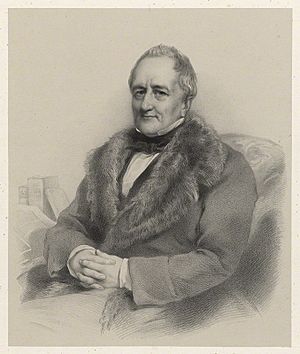William Richard Hamilton facts for kids
Quick facts for kids
William Richard Hamilton
|
|
|---|---|
 |
|
| President of the Royal Geographical Society | |
| In office 1841–1843 |
|
| Preceded by | George Bellas Greenough |
| Succeeded by | Sir Roderick Murchison |
| In office 1837–1839 |
|
| Preceded by | Sir John Barrow |
| Succeeded by | George Bellas Greenough |
| British Minister to the Kingdom of the Two Sicilies | |
| In office 1822–1825 |
|
| Preceded by | Sir William à Court |
| Succeeded by | William Noel Hill |
| Personal details | |
| Born | 9 September 1777 St Martin-in-the-Fields, London |
| Died | 11 July 1859 (aged 81) London |
| Relations | William Hamilton (grandfather) Richard Terrick (grandfather) |
| Parents | Anthony Hamilton Anne Terrick |
| Education | Harrow School |
| Alma mater | St John's College, Cambridge |
William Richard Hamilton (born September 9, 1777 – died July 11, 1859) was an important British person. He was an antiquarian, which means he studied old things. He was also a traveler and a diplomat. A diplomat is someone who represents their country in other nations. He was also a FRS, a special honor for scientists.
William Hamilton's Early Life
William Hamilton was born in London, England, in 1777. His father was Anthony Hamilton, a church official called an Archdeacon. His mother was Anne Terrick. Her father was Richard Terrick, who was a Bishop of London.
William's family had a long history. His grandfather, also named William Hamilton, was a Scottish antiquarian. The family owned land in Essex, England, for many years.
William went to school at Harrow School. Then he studied at St John's College, Cambridge, which is a famous university.
His Work and Adventures
In 1799, William Hamilton started working for Thomas Bruce, 7th Earl of Elgin. Lord Elgin was a British ambassador. William went to Egypt with him. At that time, the British were taking control of Egypt from the French.
While in Egypt, William helped secure the famous Rosetta Stone. This stone was very important because it helped people understand ancient Egyptian writing. He made sure it was safely sent to England. He also helped ship the Parthenon sculptures for Lord Elgin. These are ancient Greek sculptures.
William also traveled up the Nile River. He wrote a well-known book about Egypt called Ægyptiaca. This book was important for the study of ancient Egypt, known as Egyptology.
From 1809 to 1822, William worked for the British government. He was a high-ranking official in the Foreign Affairs department. From 1822 to 1825, he was a British Minister in the Kingdom of the Two Sicilies. This was a country in southern Italy. He lived in Naples while he was there.
In 1830, William became the Secretary of the Society of Dilettanti. This group supported the study of ancient art. He held this job until he died. He was also a Trustee of The British Museum from 1838 to 1858. He gave many ancient items to the museum.
Family Life
William Richard Hamilton got married on September 3, 1804. His wife was Julia Udny. Her father, John Udny, was a British Consul in Italy.
William and Julia had several children together. Their children included:
- William John Hamilton (1805–1867), who became a geologist.
- Alexander Edmund Hamilton (1806–1827).
- Capt. Henry George Hamilton (1808–1879), who was in the Royal Navy.
- Charles Anthony Hamilton (1809–1860).
- Arthur Richard Hamilton (1814–1882).
- Gen. Frederick William Hamilton (1815–1890).
William Richard Hamilton passed away in London on July 11, 1859.

